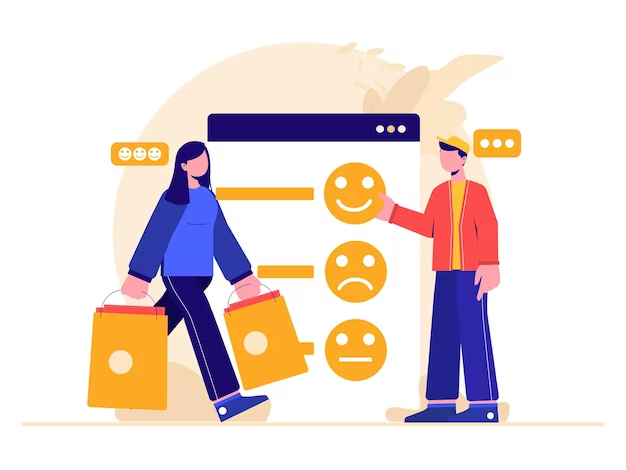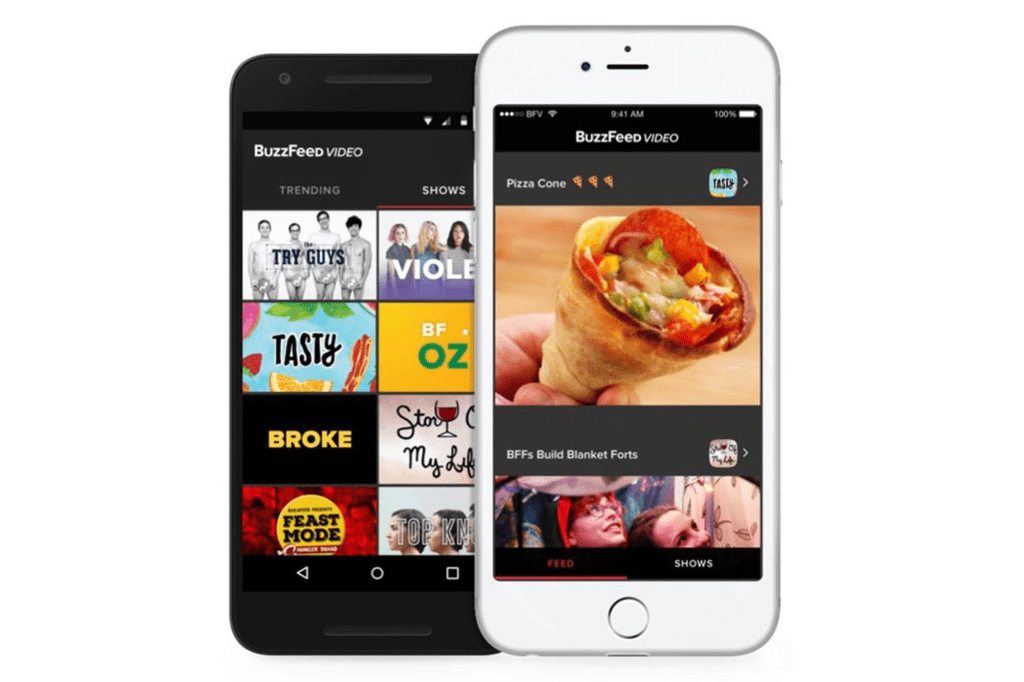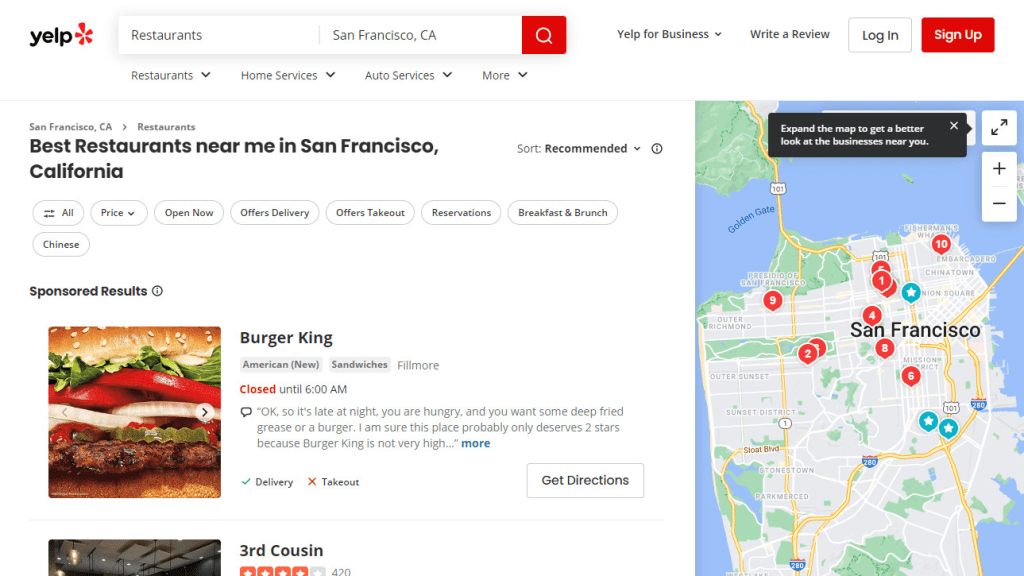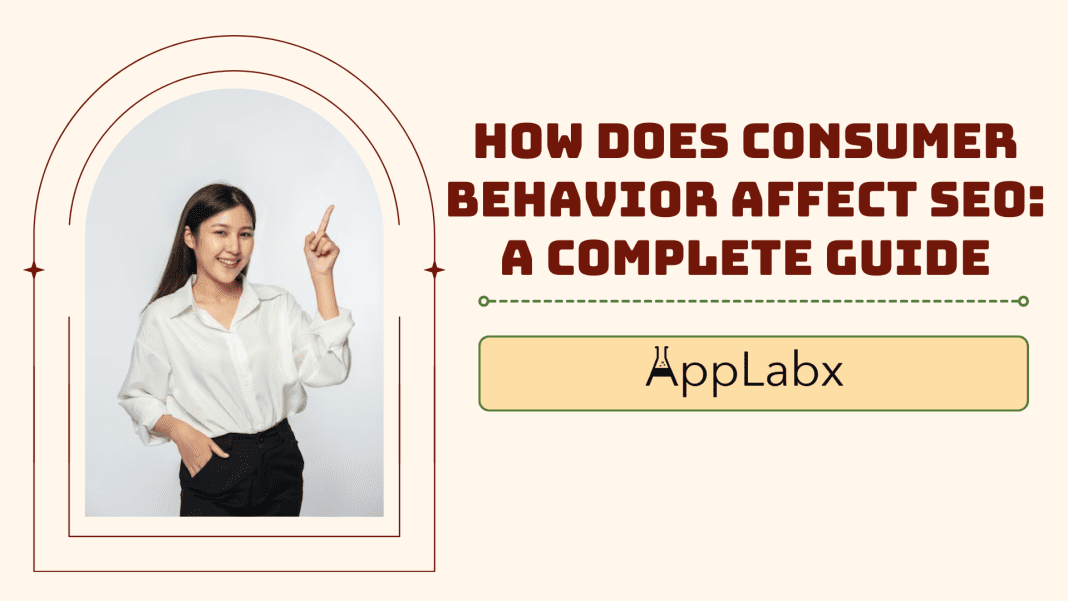Key Takeaways
- Consumer-Centric SEO Strategies: Tailor your SEO efforts to align with evolving consumer behaviors, ensuring a strategic approach that resonates with your target audience.
- Trust Signals Propel Rankings: Positive online reviews, ethical practices, and transparent engagement foster consumer trust, translating into improved search engine rankings and online visibility.
- Adaptability in the Digital Future: Stay ahead by embracing emerging trends like voice search, AI, and ethical considerations, fostering an adaptive SEO strategy for sustained success in the evolving digital landscape.
Welcome to our comprehensive guide on the intricate relationship between consumer behaviour and Search Engine Optimization (SEO).
In the ever-evolving landscape of digital marketing, understanding the profound impact of consumer behaviour on SEO is not just a strategic advantage but a crucial necessity for businesses aiming to thrive in the online realm.
Consumer behaviour, the study of how individuals make decisions to spend their time and resources, has become a dynamic force shaping the digital ecosystem.
As search engines continually refine their algorithms to prioritize user satisfaction and relevance, the intersection of consumer behaviour and SEO has never been more pivotal.
In this extensive guide, we embark on a journey to unravel the nuanced connections between what users want and how search engines respond.
From the psychological underpinnings that drive consumer decisions to the intricacies of online search patterns, we leave no stone unturned.
Our aim is not only to demystify the symbiotic relationship between consumer behaviour and SEO but also to equip you with actionable insights that can revolutionize your digital strategy.

Navigating the Complex Web of Consumer Behavior
In the first section, we dive deep into the various factors that influence consumer behaviour.
Whether it’s the psychological triggers that prompt a purchase or the social and cultural contexts shaping preferences, understanding these dynamics is fundamental to crafting an effective SEO strategy.
By decoding the intricate layers of consumer decision-making, businesses can tailor their online presence to resonate with the target audience.
The Online Consumer Odyssey
With the digital landscape becoming the primary arena for consumer interactions, we explore the unique facets of online consumer behaviour.
From deciphering search intent to mapping the user’s decision-making process, this section illuminates the pathways users traverse in the virtual realm.
By aligning your SEO efforts with these online behavioural patterns, you can ensure that your content not only captures attention but also guides users seamlessly through their journey.
Beyond Keywords: Content Creation for Consumer-Centric SEO
Keywords have long been the bedrock of SEO, but in an era dominated by user-centric algorithms, it’s imperative to go beyond mere keyword optimization.
In this section, we delve into the art of creating content that resonates with consumer needs. From addressing pain points to providing valuable solutions, we unveil the strategies that elevate your content from merely searchable to genuinely impactful.
User Signals: The Silent Language of SEO
User signals, often overlooked but profoundly influential, form the crux of our next exploration.
Dwell time, click-through rate (CTR), and bounce rate are not just metrics but signals that search engines use to gauge the relevance and satisfaction of users.
Unravelling the intricacies of user signals empowers businesses to optimize their online presence for maximum engagement and visibility.
Mobile Responsiveness: Where Consumer Behavior Meets On-the-Go Convenience
In an era dominated by mobile devices, understanding consumer behaviour necessitates a dedicated exploration of mobile responsiveness.
As users shift seamlessly between devices, businesses must adapt their SEO strategies to cater to the mobile experience.
From responsive web design to mobile-friendly content, this section unveils the key considerations for businesses aiming to capture the attention of an on-the-go audience.
Social Media’s Influence: From Social Signals to Consumer Trust
As social media permeates every aspect of our digital lives, its influence on consumer behaviour cannot be overstated.
This section explores the symbiotic relationship between social media and SEO. From the impact of social signals on search rankings to the role of social proof in building consumer trust, we unravel the intricate dance between social media and SEO strategies.
Local SEO: Navigating the Terrain of Location-Based Consumer Behavior
For businesses with a local focus, understanding the nuances of local SEO is paramount.
In this section, we explore the impact of consumer behaviour on local search trends.
From the significance of online reviews to the optimization of location-based keywords, businesses gain insights into tailoring their SEO strategies for a geographically targeted audience.
E-Commerce Dynamics: Consumer Behavior in the Online Marketplace
For e-commerce entities, the digital marketplace is a dynamic arena where consumer behaviour shapes the very foundation of success.
From the intricacies of online shopping behaviour to optimizing product pages and addressing cart abandonment, this section equips businesses with the tools needed to thrive in the competitive e-commerce landscape.
Analytics and Monitoring: Navigating the Sea of Data
In the data-driven landscape of digital marketing, analytics form the compass guiding strategic decisions.
This section explores the tools and metrics for analyzing consumer behaviour and SEO performance. By understanding key performance indicators (KPIs), businesses can fine-tune their strategies for maximum impact and return on investment.
Peering into the Future: Emerging Trends and Strategic Considerations
As digital landscapes continue to evolve, businesses need to peer into the future to stay ahead of the curve.
This section explores emerging trends in consumer behaviour and SEO, providing strategic considerations to future-proof your digital strategy. From voice search to artificial intelligence, businesses gain foresight into the next frontier of consumer-centric SEO.
But, before we venture further, we like to share who we are and what we do.
About AppLabx
From developing a solid marketing plan to creating compelling content, optimizing for search engines, leveraging social media, and utilizing paid advertising, AppLabx offers a comprehensive suite of digital marketing services designed to drive growth and profitability for your business.
AppLabx is well known for helping companies and startups use SEO to drive web traffic to their websites and web apps.
At AppLabx, we understand that no two businesses are alike. That’s why we take a personalized approach to every project, working closely with our clients to understand their unique needs and goals, and developing customized strategies to help them achieve success.
If you need a digital consultation, then send in an inquiry here.
How Does Consumer Behavior Affect SEO: A Complete Guide
- Understanding Consumer Behavior
- Connection Between Consumer Behavior and SEO
- Mobile Responsiveness and Consumer Behavior
- Social Media’s Role in Influencing Consumer Behavior and SEO
- Local SEO and Consumer Behavior
- E-Commerce and Consumer Behavior
- Analytics and Monitoring
- Future Trends and Considerations
1. Understanding Consumer Behavior

Psychological Factors Influencing Consumer Behavior
Motivation and Purchase Decisions
Consumer behaviour is profoundly influenced by psychological factors, with motivation playing a pivotal role in purchase decisions.
Understanding the psychological triggers that drive consumers to make specific choices can significantly inform SEO strategies.
Example: In a study, it was found that consumers are often driven by their emotions when making purchasing decisions, with positive emotions leading to a higher likelihood of purchase.
Perception and Brand Image
Perception shapes consumer behaviour, and the way a brand is perceived can either attract or repel potential customers. SEO efforts must align with creating a positive brand image that resonates with the target audience.
Example: Apple’s branding exemplifies the power of perception. Their focus on innovation and sleek design has created a perception of exclusivity and quality, influencing consumer behaviour and loyalty.

Learning and Information Processing
Consumers engage in a learning process before making a purchase. SEO content that facilitates this learning journey and provides valuable information can build trust and influence decisions.
Example: Educational content by financial institutions explaining complex financial concepts helps consumers make informed decisions, fostering a sense of trust and reliability.
Social Factors Shaping Consumer Behavior
Social Groups and Reference Groups
Consumers are often influenced by their social circles and reference groups.
Social media and online communities play a significant role in shaping opinions and preferences.
Example: Social proof is a powerful social factor. According to a study by Nielsen, 92 percent of consumers around the world say they trust earned media, such as recommendations from friends and family, above all other forms of advertising.
Cultural Influences
Cultural factors such as values, customs, and traditions impact consumer behaviour. SEO strategies should be culturally sensitive and resonate with the cultural identity of the target audience.
Example: McDonald’s successfully adapts its menu to suit local cultural preferences. In India, where the majority of the population avoids beef, McDonald’s offers a range of vegetarian options.

Social Class and Lifestyle
Consumer behavior is often influenced by social class and lifestyle. SEO content should reflect an understanding of the aspirations and preferences associated with different socio-economic groups.
Example: Luxury brands like Rolex strategically position themselves to appeal to a high social class, emphasizing exclusivity and craftsmanship in their SEO-driven content.

Cultural Factors Guiding Consumer Behavior
Personal Values and Beliefs
Consumers make choices aligned with their personal values and beliefs. SEO content that resonates with these values creates a deeper connection with the audience.
Example: TOMS Shoes integrates social responsibility into its brand identity. For every pair of shoes sold, TOMS pledges to donate a pair to a child in need, appealing to consumers’ sense of social responsibility.

Personality Traits and Consumer Preferences
Consumers exhibit diverse personality traits that influence their preferences.
SEO strategies can leverage persona-driven content to align with specific personality types.
Example: Coca-Cola’s “Share a Coke” campaign personalized its products by including individual names on the labels. This personalized approach resonated with consumers seeking a connection with the brand.

Lifestyle and Consumer Choices
Consumer lifestyle choices, including hobbies, interests, and activities, impact purchasing decisions. SEO content can cater to specific lifestyle segments to create targeted engagement.
Example: Outdoor apparel brands like Patagonia create content that aligns with the adventurous lifestyle of their target audience, promoting exploration and sustainability.
Online Consumer Behavior
Search Intent: The Core of Online Behavior
Understanding search intent is paramount in online consumer behavior.
SEO strategies should align with the various types of search intent, including informational, navigational, and transactional.
Example: Google’s BERT algorithm update focuses on understanding context and user intent in search queries, demonstrating the search engine’s commitment to delivering more relevant results.
Decision-Making Process in the Digital Space
The digital landscape has reshaped the traditional consumer decision-making process. SEO content needs to guide users through the online journey, providing information and value at each stage.
Example: E-commerce platforms often use retargeting ads to re-engage users who have previously visited their site but did not make a purchase, influencing the decision-making process.
User Experience and Website Interaction
User experience (UX) is a critical factor in online consumer behaviour. SEO efforts should prioritize website design, navigation, and overall user satisfaction to reduce bounce rates and enhance engagement.
Example: Amazon’s user-centric approach involves personalized recommendations based on user browsing and purchase history, creating a seamless and engaging experience.
2. Connection Between Consumer Behavior and SEO
Understanding the intricate connection between consumer behaviour and Search Engine Optimization (SEO) is paramount for businesses seeking to thrive in the highly competitive digital landscape.
In this section, we delve into the ways consumer behaviour influences SEO strategies and how businesses can leverage this relationship to enhance their online presence.

Impact on Keyword Research
Long-Tail Keywords and Consumer Intent
Long-tail keywords, phrases that are more specific and typically longer, are a key component in aligning SEO with consumer behaviour. These keywords often reflect the specific intent of the user, making them valuable for businesses aiming to capture targeted audiences.
Example: A study found that 91.8% of all search queries are long tail keywords, indicating the prevalence of specific user queries in online searches.
Search Trends and Seasonal Variations
Consumer behaviour is dynamic, and search trends evolve with changing preferences and seasons.
SEO strategies should adapt to these trends, ensuring that content remains relevant and aligns with current consumer interests.
Example: Google Trends is a powerful tool for identifying search trends. During the holiday season, searches related to “gift ideas” and “holiday deals” typically surge, prompting businesses to adjust their SEO content accordingly.

Content Creation Aligned with Consumer Needs
Creating Valuable and Relevant Content
Consumer-centric SEO involves creating content that not only aligns with search intent but also adds significant value to the user. Content should address consumer pain points, provide solutions, and engage the audience on a meaningful level.
Example: HubSpot, a leading inbound marketing platform, creates comprehensive guides and blog posts that address specific challenges faced by marketers, attracting a loyal audience seeking valuable insights.

Addressing Pain Points and FAQs
Understanding consumer pain points and frequently asked questions (FAQs) allows businesses to tailor their SEO content to directly address the needs of their audience. This not only enhances user experience but also positions the brand as a reliable source of information.
Example: Moz, a prominent SEO software company, features an extensive FAQ section on its website, addressing common queries related to SEO, digital marketing, and its products.
User Signals and SEO
Dwell Time and Content Engagement
Dwell time, the duration a user spends on a webpage after clicking a search result is a crucial user signal. High dwell times indicate that the content is relevant and engaging, influencing search engine rankings.
Example: The more time visitors spend on a page, the greater value that page delivers to users.
Click-Through Rate (CTR) and Relevance
The click-through rate (CTR) measures the percentage of users who click on a search result. A high CTR signals that the content is relevant to users, and search engines may interpret this as a positive signal for ranking.
Example: Crafting compelling meta titles and descriptions can increase CTR. Pages with a higher CTR tended to rank higher.
Bounce Rate and Content Quality
Bounce rate, the percentage of users who navigate away from a site after viewing only one page, is another user signal. A high bounce rate may indicate that the content did not meet the user’s expectations.
Incorporating these insights into SEO strategies empowers businesses to not only optimize for search engines but also cater to the preferences and behaviours of their target audience.
3. Mobile Responsiveness and Consumer Behavior
In the era of smartphones and tablets, mobile responsiveness has become a critical factor influencing consumer behaviour online.
As more users access the internet on mobile devices, businesses must prioritize mobile-friendly experiences to meet the evolving expectations of their audience.
This section explores the impact of mobile responsiveness on consumer behaviour and provides actionable insights for businesses to optimize their mobile strategies.

Growing Mobile Usage Trends
The Proliferation of Mobile Devices
The widespread adoption of smartphones has transformed the way consumers access information and make purchasing decisions. Understanding the prevalence of mobile usage is essential for businesses seeking to align their digital strategies with consumer behaviour.
According to Statista, the global number of smartphone users was forecast to continuously increase between 2024 and 2028 by in total of 496.7 million users (+10.71 percent), indicating the pervasive use of mobile devices.
Mobile Internet Usage Patterns
Consumer behaviour on mobile devices differs significantly from desktop behaviour. Businesses must grasp the nuances of mobile internet usage to tailor their SEO strategies for optimal user engagement.
As of the second quarter of 2023, around 95.8 per cent of global users accessed the internet via mobile phones, emphasizing the dominance of mobile as a primary internet access point.
Mobile-Friendly Website Design
Importance of Responsive Web Design
Responsive web design is crucial for providing a seamless and consistent user experience across various devices.
Businesses that invest in responsive design not only enhance user satisfaction but also positively impact their search engine rankings.
Example: The website of Starbucks is an excellent example of responsive design. Whether accessed from a desktop or a smartphone, the website adapts effortlessly, maintaining a visually appealing and user-friendly layout.

Impact on SEO Rankings
Google, the leading search engine, prioritizes mobile-friendly websites in its rankings.
Mobile responsiveness is now a ranking factor, making it imperative for businesses to optimize their websites for mobile devices.
Google announced mobile-first indexing in 2018, indicating a shift towards prioritizing the mobile version of websites for indexing and ranking purposes.
Accelerated Mobile Pages (AMP)
Implementing Accelerated Mobile Pages (AMP) is another strategy to enhance mobile responsiveness.
AMP pages load quickly on mobile devices, contributing to a positive user experience and potentially improving search rankings.
Example: The Washington Post utilizes AMP to deliver fast-loading news articles on mobile devices. This implementation not only improves user experience but also aligns with Google’s preference for AMP pages.
SEO Considerations for Mobile Users
Mobile-Specific SEO Techniques
Mobile SEO goes beyond responsive design and includes specific optimization techniques tailored for mobile users. Businesses should consider factors such as mobile-friendly content, site speed, and local SEO for optimal performance.
Example: Local businesses can benefit from mobile-specific SEO by optimizing for “near me” searches. A restaurant implementing local SEO strategies can attract nearby customers searching for dining options on their mobile devices.
Voice Search Optimization
The rise of voice search adds another layer to mobile SEO considerations. Businesses need to optimize for natural language queries to cater to users who rely on voice-activated assistants on their mobile devices.
Forecasts suggest that by 2024, the number of digital voice assistants will reach 8.4 billion units – a number higher than the world’s population, underlining the growing significance of voice search optimization.
User-Centric Mobile Content
Creating content specifically tailored for mobile users is essential. Mobile content should be concise, visually appealing, and easy to navigate, aligning with the preferences of users engaging with content on smaller screens.
Example: BuzzFeed’s mobile app delivers bite-sized, visually engaging content that resonates with mobile users seeking quick and entertaining information.

Mobile Analytics and Insights
Tracking Mobile User Behavior
Utilizing analytics tools to track mobile user behaviour provides valuable insights.
Analyzing metrics such as mobile traffic, bounce rates, and conversion rates helps businesses understand how users interact with their mobile content.
In the first quarter of 2023, mobile devices (excluding tablets) generated 58.33 per cent of global website traffic, emphasizing the need for businesses to prioritize mobile analytics.
A/B Testing for Mobile Optimization
A/B testing mobile elements such as call-to-action buttons, navigation menus, and content layout allows businesses to refine their mobile strategies based on user preferences and behaviours.
Example: E-commerce platforms often conduct A/B testing on mobile app interfaces to optimize the placement of “Buy Now” buttons and enhance the overall shopping experience.
4. Social Media’s Role in Influencing Consumer Behavior and SEO
The convergence of social media and Search Engine Optimization (SEO) has ushered in a new era of digital marketing.
Understanding the intricate relationship between social media and consumer behaviour is essential for businesses looking to enhance their online visibility and engage with their target audience effectively.
In this comprehensive exploration, we delve into the multifaceted role of social media in shaping consumer decisions and influencing SEO strategies.

Social Signals and SEO
Definition and Significance
- Definition: Social signals encompass likes, shares, comments, and other interactions on social media platforms. Google and other search engines consider social signals when assessing a website’s relevance and authority.
- Example: A study found that pages with more social shares tend to rank higher in Google results.
Social Signals as Ranking Factors
Google does not directly use social signals to determine ranking.
However, the indirect impact is significant, as increased visibility and engagement often lead to more organic backlinks.
Social Proof and Trust
Building Credibility through Social Proof
- Positive social proof, such as reviews and testimonials on social media, can significantly impact consumer trust and influence purchasing decisions.
- Example: Airbnb uses social proof by showcasing user reviews and ratings on their platform, helping build trust among potential users.
Trust Signals in Social Media
Verified profiles, transparent communication, and real-time engagement contribute to establishing trust signals on social media platforms.
Leveraging Social Platforms for SEO Benefits
Social Media as a Content Distribution Channel
- Sharing SEO-optimized content on social media enhances visibility and can lead to increased traffic and engagement.
- Example: National Geographic strategically uses Instagram to share visually stunning content, driving engagement and promoting their brand globally.
Social Media as a Source of Referral Traffic
Social media’s potential to drive referral traffic is substantial, making shareable content a valuable asset in the broader SEO strategy.
Nofollow Links and Social Media
- While social media links are typically nofollow, contributing to a diverse backlink profile can positively impact overall SEO.
- Example: Pinterest allows users to share links leading back to their websites, contributing to a holistic online presence.
Social Media’s Influence on Local SEO
Local Search Trends on Social Media
- Social media platforms play a pivotal role in local search trends, with users often seeking recommendations and information about businesses in their vicinity.
- According to BrightLocal, 87% of consumers read online reviews for local businesses.
Local SEO Optimization on Social Media
- Optimizing social media profiles for local SEO involves providing accurate location information, encouraging reviews, and engaging with local communities.
- Example: Facebook’s “Local Business” feature enables businesses to create pages with essential details, facilitating local SEO.
Social Media Advertising and SEO
Paid Social Media Advertising Strategies
- Investing in paid social media advertising complements SEO efforts by increasing brand visibility and driving targeted traffic.
- Global advertising spending is expected to grow by 4.6% in 2024 with media inflation driving the increase to reach US$752.8 billion.
Retargeting and Cross-Channel Integration
- Social media retargeting keeps businesses top-of-mind for users who have interacted with their website. Cross-channel integration ensures a cohesive brand experience.
- Example: E-commerce platforms use Facebook and Instagram retargeting ads to re-engage users who visited their site but did not make a purchase.
5. Local SEO and Consumer Behavior
Local Search Engine Optimization (SEO) has become a pivotal element for businesses aiming to connect with nearby consumers.
Understanding the intersection of local SEO and consumer behaviour is essential for businesses seeking to thrive in a digitally driven marketplace.
In this comprehensive exploration, we delve into the various facets of local SEO and its profound impact on consumer decisions.

The Significance of Local SEO
Definition and Scope
- Definition: Local SEO involves optimizing a business’s online presence to attract more local customers. It includes strategies to enhance visibility in local search results, local directories, and map services.
- Scope: 46% of all Google searches are looking for local information, indicating the substantial importance of local SEO in catering to users seeking nearby products and services.
Google My Business (GMB) and Local Listings
- Importance of GMB: A well-optimized Google My Business profile is a cornerstone of local SEO. It provides essential information such as business hours, location, and customer reviews.
- Example: Customers are 70% more likely to visit and 50% more likely to consider purchasing from businesses with a complete Business Profile.
Consumer Behavior in Local Searches
Mobile Searches and Local Intent
- Mobile Dominance: With the rise of mobile devices, local searches often occur on the go. Businesses must optimize for local intent to capture users actively seeking nearby solutions.
- Searches for local places without the qualifier “near me” have grown 150%, emphasizing the prevalence of local intent in mobile searches.
Local Search Queries and Purchase Intent
- Purchase Intent: Local searches often indicate a high level of purchase intent, with users actively looking for products or services in their vicinity.
- Example: A survey by Think with Google revealed that 76% of people who search on mobile for something nearby visit a business within a day.
Local SEO Strategies Impacting Consumer Behavior
Local Keywords and Content Optimization
- Keyword Strategy: Businesses should incorporate location-specific keywords in their content to align with local search queries.
- Example: A local bakery may optimize content for keywords like “best cupcakes in [city]” to attract customers searching for local treats.
Online Reviews and Reputation Management
- Role of Reviews: Online reviews significantly influence consumer decisions. Positive reviews contribute to trust and can be a deciding factor for local consumers.
- 91% of 18-34-year-old consumers trust online reviews just as much as a personal recommendation.
- Reputation Management: Responding to reviews, both positive and negative, demonstrates active engagement and a commitment to customer satisfaction.
- Example: Restaurants actively responding to reviews on platforms like Yelp show dedication to customer feedback and satisfaction.
Local SEO and Brick-and-Mortar Businesses
Foot Traffic and Local SEO
- Driving Foot Traffic: Local SEO directly impacts foot traffic for brick-and-mortar businesses. Visibility in local searches increases the likelihood of physical visits.
- Example: Proximity has long been billed as the top local ranking factor by search experts, emphasizing the connection between local SEO and physical store visits.
Local Events and Promotions
- Event Promotion: Local businesses can use local SEO to promote events, sales, or promotions, creating a sense of urgency and attracting nearby customers.
- Example: A clothing store hosting a local “Flash Sale” can optimize content to attract users searching for limited-time deals in their area.
The Role of Google Maps in Local SEO
Google Maps Integration
Mapping Services: Google Maps is a primary navigation tool for users. Ensuring accurate business information on Google Maps is integral to local SEO success.
Local SEO Analytics and Monitoring
Tracking Local SEO Metrics
Key Metrics: Businesses should use analytics tools to track local SEO metrics, including local search rankings, website traffic, and user engagement.
Iterative Improvement Based on Analytics
- Continuous Optimization: Regular analysis of local SEO metrics enables businesses to make informed decisions and iteratively optimize their strategies.
- Example: Monitoring the click-through rate (CTR) for local search results allows businesses to refine meta titles and descriptions for better performance.
6. E-Commerce and Consumer Behavior
The landscape of E-Commerce is continually evolving, and consumer behaviour plays a pivotal role in shaping the strategies and success of online businesses.
This comprehensive exploration delves into the intricacies of E-Commerce and its profound impact on consumer decisions.
From the influence of product reviews to the significance of user experience, we dissect various aspects of E-Commerce and highlight key strategies to align with ever-changing consumer preferences.

Online Shopping Trends and Growth
Rapid Growth of E-Commerce
Global E-Commerce Growth: The E-Commerce market has witnessed exponential growth, with retail e-commerce sales projected to reach about 8.1 trillion dollars by 2026, emphasizing the increasing significance of online shopping.
Mobile Commerce (M-Commerce) Trends
The Dominance of Mobile Devices: The proliferation of smartphones has fueled M-Commerce, with a significant portion of online shopping occurring on mobile devices.
Influence of Product Reviews on Consumer Decisions
Role of Online Reviews in E-Commerce
- Decision-Making Impact: Online reviews wield substantial influence.
- Example: The success of platforms like Yelp and Trustpilot, which aggregate and showcase customer reviews, highlights the importance of peer opinions in E-Commerce.

Managing and Leveraging Customer Reviews
- Importance of Responding: Responding to customer reviews, both positive and negative, demonstrates engagement and a commitment to customer satisfaction.
- Example: Businesses on platforms like Amazon actively respond to customer reviews, addressing concerns and showcasing a customer-centric approach.
User Experience (UX) and Website Design
Significance of User-Friendly Design
- Navigation and Accessibility: A user-friendly website design is crucial for providing a seamless shopping experience, with easy navigation and accessibility being paramount.
- According to a study, 38% of people will stop engaging with a website if the content/layout is unattractive.
Mobile Responsiveness
- Mobile Optimization: Given the prevalence of mobile commerce, ensuring mobile responsiveness is integral. Google’s mobile-first indexing emphasizes the importance of mobile-friendly sites.
- Example: The mobile app of clothing retailer ASOS is an exemplar of mobile responsiveness, offering an intuitive and visually appealing shopping experience.

Personalization and Targeted Marketing
Personalized Shopping Experiences
- Data-Driven Personalization: Leveraging customer data for personalized product recommendations and marketing strategies enhances the overall shopping experience.
- Example: E-commerce giant, Alibaba, utilizes advanced algorithms to provide personalized product recommendations based on user behavior and preferences.
Targeted Email Campaigns
- Email Marketing Effectiveness: Targeted email campaigns, offering personalized promotions and product suggestions, contribute to customer retention and repeat purchases.
- Personalized emails have an average open rate of 18.8%, compared to non-personalized emails at 13.1%.
E-Commerce SEO Strategies
Importance of E-Commerce SEO
- Driving Organic Traffic: E-commerce SEO is essential for driving organic traffic to online stores. Optimizing product pages and content enhances visibility in search engine results.
- Example: Etsy, an online marketplace, strategically employs SEO techniques, ensuring that individual product listings are optimized for relevant search queries.
Product Descriptions and SEO
- Optimizing Product Descriptions: Well-crafted product descriptions not only inform customers but also contribute to SEO. Incorporating relevant keywords improves search engine visibility.
- Example: The product descriptions on the e-commerce platform Shopify often include detailed information and keywords to enhance SEO.
7. Analytics and Monitoring
In the fast-paced digital landscape, the role of analytics and monitoring is paramount for businesses seeking to make data-driven decisions, enhance performance, and optimize strategies.
From website analytics to social media insights, this comprehensive exploration delves into the various facets of analytics and monitoring, providing insights into best practices, relevant examples, and the transformative impact of leveraging data for business success.

Website Analytics and User Behavior
Google Analytics and Its Importance
- Dominance of Google Analytics: Google Analytics remains the preeminent web analytics tool, providing in-depth insights into website traffic, user behaviour, and conversion data.
- Google Analytics is used by 89.3% of the top 1,000,000 websites with traffic analysis tools as of July 27, 2023.
Key Metrics for Website Performance
- Traffic Sources: Analyzing the sources of website traffic (organic, direct, referral) helps businesses understand where their audience is coming from.
- Example: An e-commerce site using Google Analytics might discover that a significant portion of its traffic comes from social media, prompting a focus on social media marketing strategies.
User Engagement Metrics
- Bounce Rate and Dwell Time: Monitoring metrics like bounce rate (percentage of visitors who leave without interaction) and dwell time (time spent on a page) provides insights into content effectiveness.
- Example: A blog noticing a high bounce rate on a specific article might revise the content or improve the call-to-action to enhance engagement.
Social Media Analytics for Strategic Insights
Utilizing Social Media Analytics Tools
- Platforms like Facebook Insights: Social media platforms offer native analytics tools. Facebook Insights, for example, provides data on page views, post reach, and audience engagement.
- Example: A business might use Facebook Insights to identify the demographics of its engaged audience, tailoring content accordingly.
Measuring Social Media ROI
Conversion Tracking: Integrating analytics to track conversions from social media efforts helps businesses assess the return on investment (ROI) of their social media campaigns.
Email Marketing Analytics
Tracking Email Campaign Performance
- Email Open Rates and Click-Through Rates: Monitoring open rates and click-through rates helps evaluate the effectiveness of email campaigns.
- Example: An e-commerce brand might use email analytics to refine its campaigns, emphasizing products that receive higher click-through rates.
A/B Testing for Email Optimization
- Iterative Improvement: A/B testing different elements in email campaigns (subject lines, visuals, calls-to-action) allows businesses to iteratively optimize their email marketing strategies.
- Example: An online retailer might conduct A/B testing on email subject lines to identify which version resonates better with its audience.
Search Engine Optimization (SEO) Analytics
Google Search Console for SEO Insights
- Keyword Performance: Tools like Google Search Console provide data on keyword performance, including impressions, clicks, and average position.
- Example: A content-focused website may use Search Console to identify high-impression keywords and optimize content around them.
Backlink Analysis for SEO Strength
- Backlink Tools: Monitoring backlinks to a website helps assess its authority and influence in search engine rankings.
- Ahrefs, a popular SEO tool, indicates that backlinks help pages rank higher in Google’s search results.
E-Commerce Analytics for Conversion Optimization
Shopping Behavior Analysis
- Cart Abandonment Rates: E-commerce analytics tools provide insights into cart abandonment rates, enabling businesses to identify and address potential friction points in the buying process.
- Example: An online retailer might implement strategies such as retargeting ads or improved checkout processes to reduce cart abandonment.
Product Performance Metrics
- Best-Selling Products: Identifying top-performing products helps businesses refine their inventory, marketing, and pricing strategies.
- Example: An e-commerce platform might leverage analytics to promote best-selling products prominently on its website.
Data Security and Compliance
Ensuring Data Security in Analytics
- Secure Data Handling: Implementing secure data handling practices is crucial to protect sensitive information gathered through analytics tools.
- Example: Websites using Google Analytics often configure settings to anonymize IP addresses, enhancing user privacy.
Compliance with Regulations
GDPR and CCPA Compliance: Adhering to data protection regulations like GDPR and CCPA is essential for businesses handling user data.
Iterative Improvement and Future Strategies
Continuous Iteration Based on Analytics Insights
- Agile Decision-Making: Regularly analyzing analytics data allows businesses to make informed, agile decisions and refine strategies based on real-time insights.
- Example: An e-commerce platform might tweak its website design based on user interaction data to enhance the overall user experience.
AI and Predictive Analytics
- Predictive Analytics: The integration of AI and predictive analytics enables businesses to anticipate trends, customer preferences, and market shifts.
- By 2022, more than half of major new business systems will incorporate continuous intelligence that uses real-time context data to improve decisions.
8. Future Trends and Considerations
As the digital landscape continues to evolve at a rapid pace, staying abreast of future trends and considerations is paramount for businesses aiming to remain competitive and relevant.
From the integration of emerging technologies to shifts in consumer behavior, this comprehensive exploration delves into the key factors shaping the future of various industries.

Emerging Technologies Shaping the Landscape
Artificial Intelligence (AI) and Machine Learning (ML)
- AI in Personalization: AI algorithms are increasingly used to provide personalized experiences, from recommendation engines on e-commerce platforms to personalized content suggestions on streaming services.
- The global artificial intelligence (AI) software market is forecast to grow rapidly in the coming years, reaching around 126 billion U.S. dollars by 2025, reflecting the widespread adoption of AI technologies.
Augmented Reality (AR) and Virtual Reality (VR)
- AR in Retail: AR is revolutionizing the retail experience, allowing customers to virtually try on products before purchasing.
- Example: IKEA’s AR app enables customers to visualize how furniture will look in their homes before making a purchase.
Blockchain Technology
- Supply Chain Transparency: Blockchain enhances transparency in supply chains, providing consumers with verifiable information about the origin and journey of products.
- The global blockchain market is projected to reach $94.0 billion by the end of 2027.
Consumer-Centric Approaches in Marketing
Rise of Influencer Marketing
- Impact of Influencers: Influencer marketing continues to gain prominence, with influencers becoming powerful voices shaping consumer opinions.
- The influencer marketing industry is projected to be worth USD 22.3 billion by 2024.
Interactive Content Engagement
- Interactive Content Strategies: Engaging consumers through interactive content, such as polls, quizzes, and interactive videos, is becoming increasingly popular.
- Example: Buzzfeed’s Tasty uses interactive cooking videos that allow viewers to customize recipes based on their preferences.
Evolving SEO Strategies
Voice Search Optimization
Rise of Voice Searches: With the proliferation of voice-activated devices, optimizing for voice search is crucial for maintaining search engine visibility.
Core Web Vitals and User Experience
- Google’s Core Web Vitals: Google emphasizes user experience through Core Web Vitals, including factors like page speed, responsiveness, and visual stability.
- Example: Websites that prioritize Core Web Vitals may see improved search rankings, as Google considers user experience as a ranking factor.
Data Privacy and Security Concerns
Stricter Data Privacy Regulations
- GDPR and Beyond: Data privacy regulations, such as GDPR, are becoming more stringent, requiring businesses to prioritize user privacy and secure data handling.
- Example: Apple’s App Tracking Transparency (ATT) feature requires apps to request user permission before tracking their data across apps or websites.
Cybersecurity Measures
- Rise in Cyber Threats: With the increasing digitization of businesses, cybersecurity measures are crucial to protect sensitive data from cyber threats.
- The Cybersecurity market worldwide is expected to show an annual growth rate (CAGR 2023-2028) of 10.48%, resulting in a market volume of US$273.60 billion by 2028.
Sustainable Practices in Business
Green Technologies and Eco-Friendly Initiatives
- Sustainable Business Practices: Consumers are increasingly conscious of sustainability, driving businesses to adopt eco-friendly practices and technologies.
- Example: Tesla’s emphasis on electric vehicles and sustainable energy solutions reflects a commitment to environmental responsibility.
Circular Economy Models
- Reducing Waste: Adopting circular economy models involves designing products with a focus on reducing waste and promoting recycling.
- Example: The fashion industry is exploring circular fashion models, encouraging recycling, and reducing the environmental impact of fast fashion.
Global Shifts in Remote Work and Collaboration
Permanent Hybrid Work Models
Remote Work as the Norm: The pandemic accelerated the adoption of remote work, leading to a shift towards hybrid work models, with employees working both in-office and remotely.
Virtual Collaboration Tools
- Continued Reliance on Virtual Collaboration: Virtual collaboration tools, from video conferencing to project management platforms, will remain integral for businesses facilitating remote work.
- Example: Platforms like Zoom and Microsoft Teams experienced unprecedented growth during the pandemic, highlighting the importance of virtual collaboration.
Ethical Considerations in AI and Automation
Ethical AI Development and Deployment
- Bias Mitigation: As AI becomes more prevalent, addressing biases in algorithms and ensuring ethical AI development is crucial.
- Example: OpenAI’s emphasis on responsible AI development includes measures to mitigate biases and promote ethical use of AI technologies.
Impact on Employment and Job Displacement
- Reskilling and Adaptation: The rise of automation raises concerns about job displacement. Businesses must prioritize reskilling and upskilling programs to adapt to changing workforce needs.
- By 2025, 85 million jobs may be displaced by a shift in the division of labour between humans and machines, while 97 million new roles may emerge.
Conclusion
In the dynamic realm of digital marketing, the interplay between consumer behaviour and Search Engine Optimization (SEO) is a critical determinant of success.
This comprehensive guide has unravelled the intricate relationship between how consumers behave online and the strategies businesses employ to enhance their visibility on search engines.
As we conclude this exploration, it’s evident that the landscape is ever-evolving, presenting both challenges and opportunities for businesses seeking to thrive in the digital ecosystem.
The Symbiosis of Consumer Behavior and SEO
The symbiotic relationship between consumer behaviour and SEO is at the core of effective digital marketing.
Consumer preferences, expectations, and decision-making patterns significantly influence how businesses strategize their SEO efforts.
From the rise of mobile searches to the impact of social signals, understanding consumer behaviour is akin to holding the key to unlocking enhanced online visibility.
SEO Strategies Tailored to Consumer Preferences
Crafting SEO strategies that align with consumer preferences is imperative for success in the competitive online arena.
The guide has delved into various facets, including the role of social media, the importance of local SEO, and the impact of user experience on search engine rankings.
By tailoring SEO practices to resonate with the way consumers search, engage, and make decisions, businesses can create a robust online presence that stands out in the digital crowd.
The Dynamic Nature of Consumer Preferences
Consumer behaviour is anything but static.
It evolves in response to technological advancements, societal shifts, and the ever-expanding digital landscape.
As we peer into the future, emerging technologies like artificial intelligence, voice search, and augmented reality are poised to redefine how consumers interact with digital content.
Staying ahead requires not only a keen understanding of current behaviours but also a readiness to adapt to the trends that will shape tomorrow.
Consumer Trust as the Cornerstone of SEO Success
Trust, a cornerstone of consumer relationships, echoes through the realms of SEO.
From the importance of positive online reviews to the trust signals embedded in social media profiles, building and maintaining trust is not just good business practice but a strategic SEO imperative.
Businesses that prioritize transparency, ethical practices, and genuine engagement are likely to find themselves not only winning the trust of consumers but also ascending the ranks in search engine results.
The Holistic Approach to SEO and Consumer Insights
In the holistic approach to SEO, consumer insights serve as the compass guiding businesses toward success.
Analytics tools, social media metrics, and SEO data converge to provide a comprehensive understanding of how users interact with digital content.
This guide has emphasized the significance of continuous monitoring, iterative improvement, and data-driven decision-making – elements that constitute the bedrock of a forward-thinking SEO strategy.
Adapting to the Future: A Call to Action
As we stand at the crossroads of the present and the future, the guide underscores the importance of adaptation.
From the rise of voice search to the ethical considerations in AI development, businesses must be agile in their approach.
Embracing change, staying attuned to emerging trends, and prioritizing consumer-centric strategies are not just recommendations but imperatives for those seeking enduring success in the digital marketplace.
In conclusion, the symbiotic dance between consumer behaviour and SEO is a nuanced yet powerful force.
This complete guide has equipped businesses with the knowledge and insights needed to navigate this dynamic landscape.
If you are looking for a top-class digital marketer, then book a free consultation slot here.
If you find this article useful, why not share it with your friends and business partners, and also leave a nice comment below?
We, at the AppLabx Research Team, strive to bring the latest and most meaningful data, guides, and statistics to your doorstep.
To get access to top-quality guides, click over to the AppLabx Blog.
People also ask
How does SEO affect customers?
SEO significantly impacts customers by enhancing online visibility. Effective SEO ensures businesses appear in relevant searches, providing valuable information to potential customers. Improved rankings instill trust, driving organic traffic, and fostering a positive digital experience for users.
How does consumer behaviour affect marketing?
Consumer behaviour shapes marketing strategies profoundly. Consumer insights guide product positioning, content creation, and engagement tactics, maximizing the effectiveness of marketing efforts.
How does consumer behaviour affect the business?
Consumer behaviour directly impacts business success. Understanding preferences helps tailor products and services. Positive experiences drive brand loyalty, word-of-mouth referrals, and repeat business. Adapting to changing behaviours ensures long-term relevance and sustained growth.


































